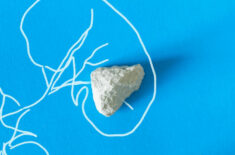Overview
Gout is a form of arthritis that can suddenly come on and is characterized by intense joint pain due to increased uric acid levels.
Gout symptoms can include:
- Joint pain (most commonly in the big toe)
- Inflammation, swelling, and redness in the affected area
- Reduced range of motion
Top MC Blends Picks
 |
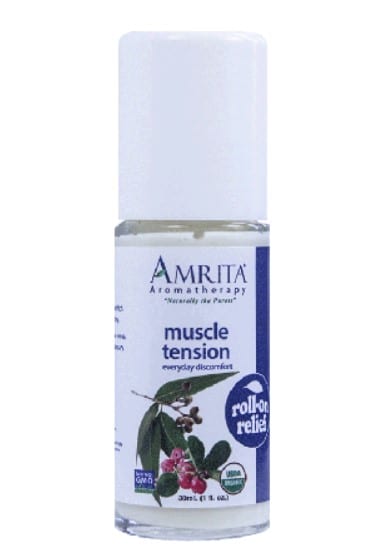 |
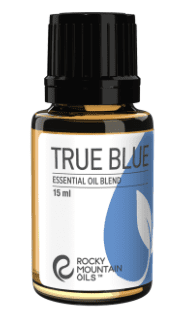 |
|
|
Vibrant Blue Oils Anti-inflammatory Essential Oil Blend Shop |
Amrita Muscle Tension Essential Oil Blend Shop |
Rocky Mountain Oils True Blue Essential Oil Blend Shop |
|
| MC Score | 99% | 95% | 90% |
| Therapeutic grade? | Yes | Yes | Yes |
| Organic or Wild-Crafted? | Yes (Non-Certified) | Yes (Certified) | Yes (Non-Certified) |
| Chemical Free | Yes | Yes | Yes |
| Testing available? | Yes (Contact Company) | Yes (Contact Company) | Yes (On Site) |
Best Essential Oils for Gout
 |
 |
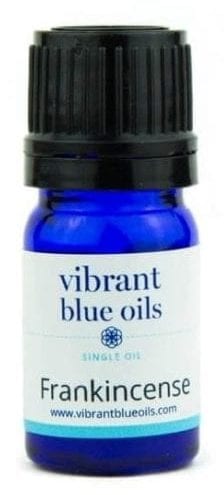 |
 |
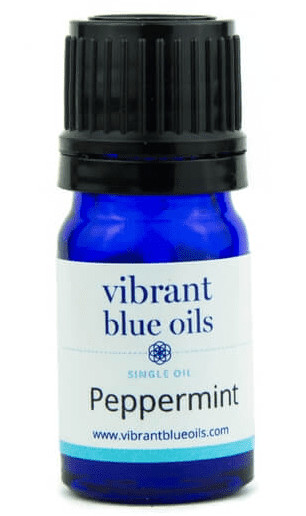 |
|
|
Amrita Lemongrass Essential Oil Shop |
Mountain Rose Herbs Turmeric Essential Oil Shop |
Vibrant Blue Oils Frankincense Essential Oil Shop |
Aromafloria Ginger Essential Oil Shop |
Vibrant Blue Oils Peppermint Essential Oil Shop |
|
| MC Score | 95% | 99% | 99% | 93% | 99% |
| Therapeutic grade? | Yes | Yes | Yes | Yes | Yes |
| Organic or Wild-Crafted? | Yes (Certified) | Yes (Certified) | Yes (Non-Certified) | Yes (Certified) | Yes (Non-Certified) |
| Chemical Free | Yes | Yes | Yes | Yes | Yes |
| Testing available? | Yes (On Site) | Yes (Contact Company) | Yes (Contact Company) | Yes (On Site) | Yes (Contact Company) |
What causes gout?
Gout pain is caused when urate crystals build up in your joints.
Your body produces uric acid naturally, and it usually dissolves in your bloodstream first and then passes through your kidneys to be excreted via urine.
Sometimes the body either produces too much uric acid, or it can’t excrete the acid fast enough. This leads to the formation of needle-like crystals in your joints, causing an extremely painful gout attack.
What can you do to manage gout?
If you’re experiencing gout symptoms, you can make specific lifestyle changes that may help manage your condition.
Avoid:
- Obesity can exacerbate gout symptoms
- Animal protein and fruit-heavy diets can increase uric acid levels
- Alcohol (especially beer)
Choose:
- Weight loss if you’re overweight
- Keep hydrated with plenty of water
- Avoid alcohol
- Limit protein intake
- Supplement with celery seed and quercetin
Traditional gout treatment options can include NSAIDs (non-steroidal anti-inflammatory drugs), corticosteroids, and colchicine medication for pain relief.
If you’re looking for a natural health approach and home remedies to manage gout symptoms, essential oils and aromatherapy might also help.
Essential Oils As All-Natural Remedies
Essential oils (EOs) are highly concentrated plant extracts that offer multiple health benefits.
Essential oil uses include a wide range of conditions like:
- Boosting immunity
- Decreasing inflammation
- Soothing arthritis symptoms
- Relieving pain and discomfort
- Muscle pain
- Foot pain
- Addressing allergy symptoms
- Tennis elbow
- Soothing eczema
- Psoriasis relief
- Shingles
- Treating warts
- Healing bug bites
- Helping sunburns and skin burns
- Skincare
It’s thanks to their potent pain-relief and anti-inflammatory properties that many people choose to incorporate them into their daily routine.
The Best Essential Oils For Gout Relief
Lemongrass oil
According to a study published in the International Food Research Journal, lemongrass oil derived from the stems of the plant appears to have strong anti-gout activity and can help reduce uric acid levels in the body. (1) Lemongrass also has a strong antioxidant and anti-inflammatory activity, making it one of the most effective EOs for gout.
MC Top Pick
Amrita Lemongrass Essential Oil
| MC Score | 95% |
|---|---|
| Therapeutic grade? | Yes |
| Organic or Wild-Crafted? | Yes (Certified) |
| Chemical free? | Yes |
| Testing available? | Yes (On Site) |
Turmeric oil
According to a growing amount of research, turmeric essential oil boasts potent pain-relieving, antioxidant, and anti-inflammatory effects thanks to its main active ingredient called curcumin.
A 2016 systematic review of various randomized clinical trials published in the Journal of Medicinal Food found that overall, 1,000mg/day of curcumin extract appears to help alleviate arthritis symptoms. Moreresearch is needed. (2)
MC Top Pick
Mountain Rose Herbs Turmeric Essential Oil
| MC Score | 99% |
|---|---|
| Therapeutic grade? | Yes |
| Organic or Wild-Crafted? | Yes (Certified) |
| Chemical free? | Yes |
| Testing available? | Yes (Contact Company) |
Frankincense oil
Thanks to Frankincense’s potent anti-inflammatory effects, the Arthritis Foundation suggests supplementing Frankincense essential oil to treat inflammation pain symptoms. (3) Frankincense is also a pain reliever and an antioxidant.
MC Top Pick
Vibrant Blue Oils Frankincense Essential Oil
| MC Score | 99% |
|---|---|
| Therapeutic grade? | Yes |
| Organic or Wild-Crafted? | Yes (Non-Certified) |
| Chemical free? | Yes |
| Testing available? | Yes (Contact Company) |
Ginger oil
Ginger oil is well-known for fighting inflammation-induced pain.
A 2016 animal study found lowered rheumatoid arthritis-related inflammation rates in female rats after exposure to ginger essential oil. (4)
Another study published in Arthritis & Rheumatism found that ginger extract significantly reduced symptoms of osteoarthritis of the knee. (5)
MC Top Pick
Aromafloria Ginger Essential Oil
| MC Score | 93% |
|---|---|
| Therapeutic grade? | Yes |
| Organic or Wild-Crafted? | Yes (Certified) |
| Chemical free? | Yes |
| Testing available? | Yes (On Site) |
Peppermint oil
Menthol, an active compound in peppermint essential oil, is a well-known pain reliever, anti-inflammatory, and anesthetic agent.
MC Top Pick
Vibrant Blue Oils Peppermint Essential Oil
| MC Score | 99% |
|---|---|
| Therapeutic grade? | Yes |
| Organic or Wild-Crafted? | Yes (Non-Certified) |
| Chemical free? | Yes |
| Testing available? | Yes (Contact Company) |
Lemon oil
Lemon essential oil helps regulate the body’s pH levels by reducing acidity in the body. This might help reduce uric acid levels in the body as well as lower inflammation and pain.
MC Top Pick
Vibrant Blue Oils Lemon Essential Oil
| MC Score | 99% |
|---|---|
| Therapeutic grade? | Yes |
| Organic or Wild-Crafted? | Yes (Non-Certified) |
| Chemical free? | Yes |
| Testing available? | Yes (Contact Company) |
Rosemary oil
Rosemary essential oil is a potent pain reliever and antioxidant that may also help the body flush out uric acid.
MC Top Pick
Aromafloria Rosemary Essential Oil
| MC Score | 93% |
|---|---|
| Therapeutic grade? | Yes |
| Organic or Wild-Crafted? | Yes (Certified) |
| Chemical free? | Yes |
| Testing available? | Yes (On Site) |
Other EOs that might help with gout pain are:
- Tea tree
- Holy basil
- Chamomile
- Wintergreen
How To Use Essential Oils For Gout
Use EOs topically on the affected toe or area.
Always dilute your EOs with a carrier oil like jojoba or coconut oil.
Stick to 2-3 drops of EO per 1 teaspoon of carrier oil.
Gently massage the painful area and allow the oils to seep into the skin.
Other ways to use EOs for gout are:
Foot bath (mix 15-17 drops of EO, 1.5 cups of Epsom salts, and warm water)
Hot or Warm Compresses (Fill a bowl with warm water and 15 drops of EO, fully submerge a towel in the water, wring it, and place it over the affected area)
Safety Concerns
When used safely and adequately, EOs usually offer little to no side effects.
When used topically as a natural aid for gout pain, EOs must always be diluted in a carrier oil to prevent skin irritation and reactions.
It’s advisable to perform a patch test on a non-affected area of the skin and wait 24 hours to confirm no allergic reaction.
If you experience any adverse reaction to any oil, discontinue use immediately and consult your healthcare provider.
Be aware of each oil you use contraindications as some EOs aren’t suitable for children or pregnant or nursing women.
Always choose high-quality, certified organic and therapeutic grade products to avoid diluted batches and the addition of potentially harmful chemicals.
The FDA (Food and Drug Administration) does not regulate EOs, so it’s essential to use the highest-quality products for medicinal purposes.
Create your own DIY essential oil blends because mixing EOs can help amplify and enhance their therapeutic and medicinal effects.
REFERENCES
:
(1) http://www.ifrj.upm.edu.my/19%20(02)%202012/(29)IFRJ-2012%20Mirghani.pdf
(2) https://www.liebertpub.com/doi/full/10.1089/jmf.2016.3705
(3)https://www.arthritis.org/health-wellness/treatment/complementary-therapies/supplements-and-vitamins/supplement-and-herb-guide-for-arthritis-symptoms
(4) https://www.ncbi.nlm.nih.gov/pmc/articles/PMC5115784/
(5) https://pubmed.ncbi.nlm.nih.gov/11710709/








